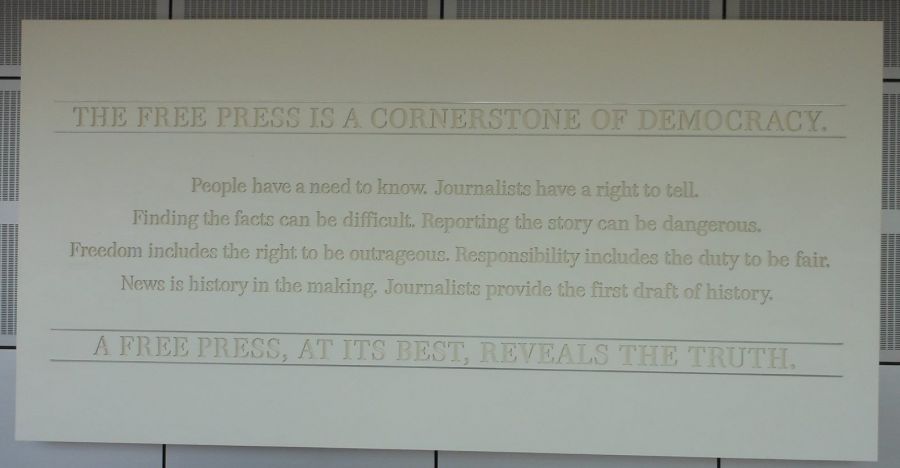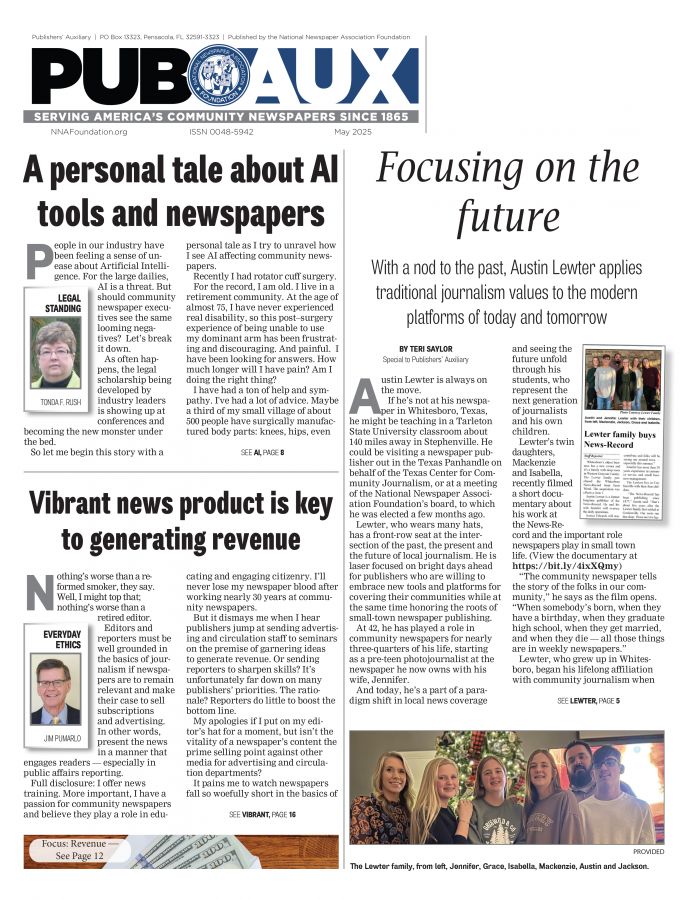Citizens key to saving community newspapers
Aug 1, 2022
REED ANFINSON
Owner | Swift County Monitor-News in Benson, Minnesota
“This is a nation increasingly divided journalistically between those who live and work in communities where there is an abundance of local news and those who don’t,” Penny Abernathy writes in the The State of Local News 2022. Her study was published in collaboration with the Medill School of Journalism at Northwestern University.
“Invariably, the economically struggling, traditionally underserved communities that need local journalism the most are the very places where it is most difficult to sustain either print or digital news organizations,” she continues.
Count among those communities thousands of small towns around rural America that almost always have one source of trusted news — their local newspaper.
How bad is the problem? Abernathy’s fifth edition of an ongoing study on local news in the digital age found that an average of two community newspapers disappeared every week between late 2019 and May 2022 — 360 newspapers gone, with almost all of them weeklies. Since 2005, more than 2,100 small-town newspapers have disappeared.
We’ve lost 60% of America’s journalists, those who keep an eye on government and tell the stories of our communities.
More than 70 million Americans live in communities without a newspaper or are at risk of losing theirs and soon becoming a news desert. The Medill report says the next few years will “be pivotal” in deciding whether hundreds more community newspapers are lost.
When local news disappears, it doesn’t simply leave a void. “The loss of local journalism has been accompanied by the malignant spread of misinformation and disinformation, political polarization, eroding trust in media, and a yawning digital and economic divide among citizens,” Abernathy writes.
Communities suffer when the newspaper is gone.
We inform our readers about the impact of a school tax levy on their home or business but at the same time report on the alternative of cutting classes in the sciences to balance the budget. We inform them about the quality of their drinking water, public health threats from disease and the impact of not providing adequate daycare for our young families.
The stories we write about the challenges and successes of our communities bind our citizens with a sense of shared identity and purpose. Without us, communities become more polarized; efforts to better the lives of their people are fragmented and frustrated.
THE COSTLY ONGOING DIGITAL MISTAKE
For more than a decade, we’ve pushed back against the false narrative that the internet would provide the same quality and depth of news community newspapers give their readers. Too often this false narrative creates a misleading assumption that everything will be just fine, but the evidence proves differently.
“Digital alternatives, once seen as the savior, remain nonexistent in most communities that have lost a newspaper,” Abernathy writes. “Over the past two years, the number of new digital-only state and local news sites, 64, slightly exceeded the number of sites that went dark. In 2022, there are 545 digital-only state and local sites; most employ six or fewer full-time reporters.” And nearly all are in large metropolitan areas.
“In a digital era when scale matters, community newspapers in small and mid-sized markets, and for-profit local and neighborhood news sites, have been the most vulnerable and difficult to sustain,” the Medill report says.
To create the innovative thinking that will save community newspapers, to energize the public behind those initiatives, you first have to accept that digital sites are not going to work in rural America. Only Facebook and Google are the digital benefactors of revenue built on the reporting of rural journalists.
When naive optimists write about successful blueprints for local news that involve the internet, philanthropy or membership models, they mislead readers. While at an event sponsored by the Atlantic magazine in Minneapolis, we sat across from Star Tribune Publisher Mike Klingensmith. We were both referred to as “local newspaper publishers.” His seven-county metro market has over 3 million people. Our rural counties each have populations of under 10,000. According to the U.S. Census, 76 percent of America’s communities have 5,000 or fewer people.
“The results show, fairly convincingly, that despite the economic hardships that local newspapers have endured, they remain, by far, the most significant providers of journalism in their communities,” Philip Napoli and Jessica Mahone of Duke University write. “And while there is great hope and expectation that newer, online journalism sources will emerge to compensate for the cutbacks and closures affecting local newspapers, our study has shown that this has yet to take place.”
Ignorance of the scale at which we operate, and the limitations on our income because of it, leads to proposed solutions that don’t help us or our rural communities much.
With newsprint costs rising sharply, gas prices doubling, labor more expensive and postal rates going up once again, more newspapers will be lost.
Meanwhile, local ownership is disappearing. Publishers who have committed decades to their communities face the heart-wrenching decision to close their doors because they can’t find a new owner willing to risk their financial future buying a small-town newspaper. Into the void in some communities come newspaper chains that cut expenses and the quality of journalism they provide.
What’s needed to save America’s small-town community newspapers? Part of the answer lies with the nation’s founders: Significantly reduce the cost of mailing newspapers and commit public funds at the local, state and federal levels to advertising placement.
A federal payroll tax credit for the journalists we employ and tax credits for subscribers would help. But one of the necessary and most effective financial aids would be a tax on Google and Facebook, two companies that have built unfathomable wealth on the backs of newspapers by linking to their content.
Finally, we need the support of our communities. Contact your members of Congress and state legislatures, and tell them community newspapers are a public good essential to an informed electorate in a representative democracy.
“A popular government without popular information or the means of acquiring it is but a prologue to farce or tragedy or perhaps both,” Founding Father James Madison wrote. The misinformation spreading on the internet is creating the farce, and the disappearance of local newspapers the tragedy.
Reed Anfinson is the publisher of the Swift County Monitor-News in Benson, Minnesota, and the vice president of the National Newspaper Association Foundation. Email reed@swiftcountymonitor.com










